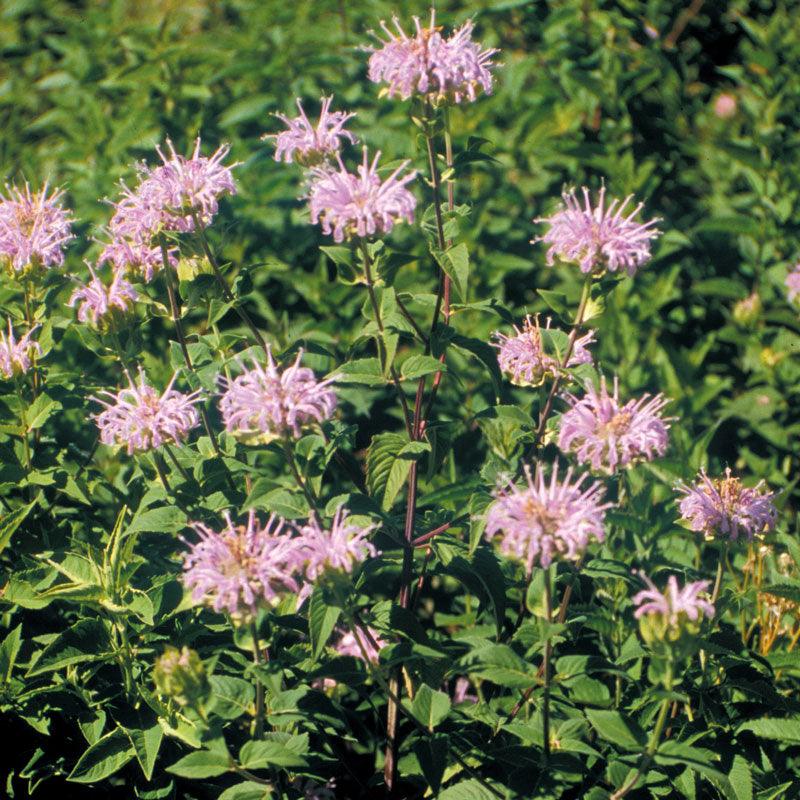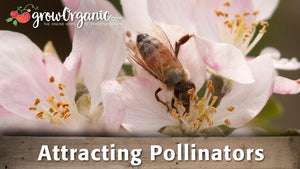Item Number: SWF1861
Bee Balm
Useful and Beautiful
Bee Balm - Monarda fistulosa
Perennial Open Pollinated. Member of the mint family, also called wild bergamot, this herbaceous perennial reaches 4 feet tall with lavender colored flowers in summer. It has a long history of use as a medicinal herb and today is used to flavor herbal teas. It is enjoyable in the garden for its pleasant scent. Grows readily from seed. Sow seeds in early fall or in spring after danger of last frost has passed. Keep soil moist for 6 weeks after planting bee balm.
Flowers: Aromatic leaves. Blooms in summer
Attracts: Attracts birds, hummingbirds, butterflies, and bees
Soil: Requires moderately fertile, well draining soil
Native: North America
USDA Zone: 4-8
Plant In: Fall or Spring
Planting Depth: 1/8"
Days to Germinate: 10-21 Days
Height At Maturity: 3'-4'
Sun/Shade Requirements: Full to Partial Sun. Partial shade.
Water Needs: Moderate Water
Approx. Seeds Per Pack: 700
Bee balm is native to North America. It originates from various regions across the continent, primarily in eastern and central parts of the United States and Canada. Different species of bee balm can be found in specific areas within this range.
Monarda species are well adapted to the diverse climates and ecosystems of North America, and they have been an integral part of the continent's flora for centuries. Native American tribes were among the first to recognize the value of bee balm for its medicinal, culinary, and aromatic properties, and they used it for various purposes.
Today, bee balm has become a popular garden plant not only in its native range but also in other parts of the world due to its attractive flowers, aromatic leaves, and its ability to attract pollinators like bees and butterflies. Gardeners and horticulturists have also developed various cultivars and hybrids of bee balm, further expanding its presence in gardens and landscapes around the globe.
So, while bee balm has its roots firmly planted in North America, its popularity has spread beyond its native habitat to become a beloved and versatile garden plant worldwide.
Growing bee balm (Monarda spp.) is a desirable choice for gardeners due to a multitude of reasons, encompassing both aesthetic and practical benefits. Here are several compelling reasons why someone might want to cultivate this lovely herbaceous perennial:
- Attracting Pollinators: Bee balm is a magnet for pollinators such as bees, butterflies, and hummingbirds. Its vibrant, tubular flowers and sweet nectar-rich blooms provide essential food sources for these beneficial insects, promoting biodiversity and supporting local ecosystems.
- Ornamental Beauty: With its showy, cone-shaped flower heads in various colors, including shades of red, pink, and purple, bee balm adds visual appeal to gardens and landscapes. It can serve as a striking focal point or complement other plants in mixed flower beds.
- Fragrance: Bee balm's aromatic leaves and blossoms release a delightful, minty scent when touched or brushed against, enhancing the sensory experience of your garden.
- Culinary Uses: The leaves of bee balm are edible and can be used to make flavorful herbal teas, adding a citrusy, minty zest to beverages and culinary dishes. They are also utilized in salads, marinades, and as a garnish.
- Potential Medicinal Properties: Traditionally, bee balm has been used in herbal medicine for its antimicrobial and anti-inflammatory properties. It can be employed to make infusions or salves for various ailments.
- Low Maintenance: Bee balm is generally easy to grow, making it suitable for both experienced and novice gardeners. It thrives in well-drained soil, tolerates a range of light conditions, and is relatively pest-resistant.
In summary, cultivating bee balm offers a harmonious blend of ecological benefits, aesthetic charm, culinary utility, and low-maintenance gardening, making it a compelling choice for those seeking a versatile and rewarding addition to their outdoor spaces.
Check Your Zone Compatibility:
Compatible with your zone.
Growing Zone for

Our Guarantee To You
Since 1976, we've served our customers at every stage of growing. Please contact us at any time. We are happy to support and assist you.
Shipping Information
Shipping Information
Shipping Weight: 0.0 lb
Dimensions: 4.5"L x 3.25"W x 0.1"H
Features
Features
- Attracts Bees/Butterflies
- Attracts Beneficial Insects
- Attracts Hummingbirds
- Edible Flower
- Fragrant
- Good Cut Flower
- Native
- Open-Pollinated
- Wildflower
Characteristics
Characteristics
Planting & Care
Planting & Care
Useful Information
Useful Information
Guarantee
Guarantee

Peaceful Valley Farm & Garden Supply brand vegetable seeds are guaranteed to germinate. Once the seeds have sprouted, please understand that Peaceful Valley cannot be held responsible for the many uncontrollable growing and climatic conditions that must be met to ensure the success of your crop(s).
Share




Absolutely wonderful flower that draws lots of bees and butterflies. But watch out when planting in beds or ground as I found out it can be quite invasive - similar to mint.
Give this plant room, the clump will get bigger year after year. Very easy to start from seed and comes back year after year. The bees love it!





